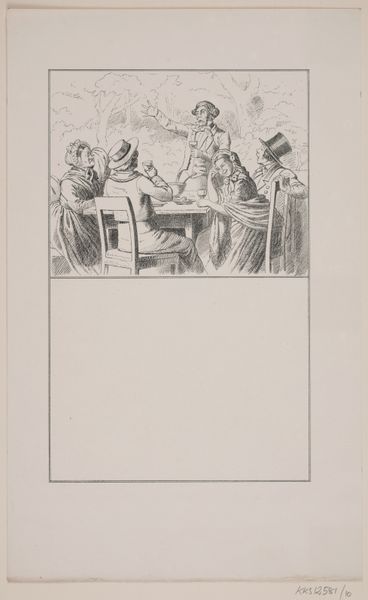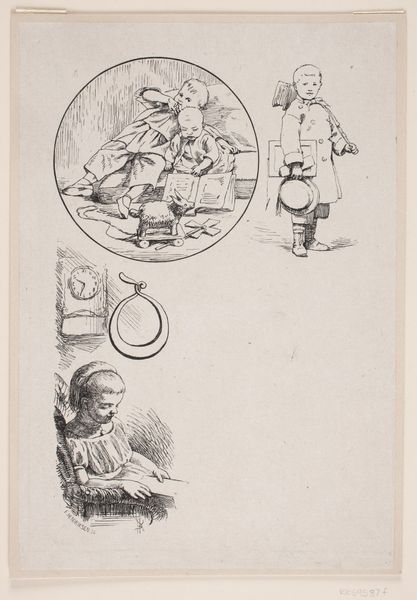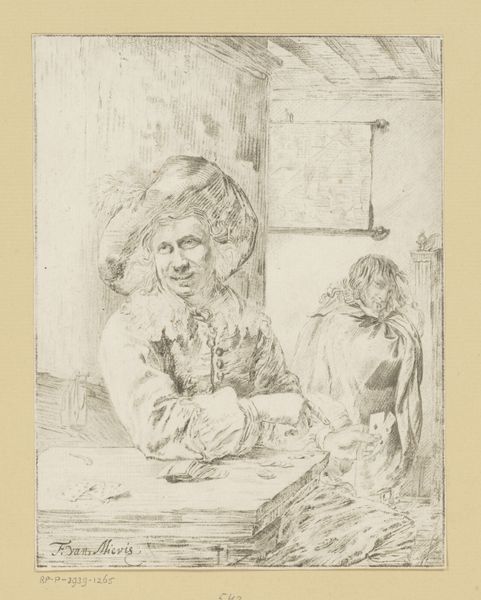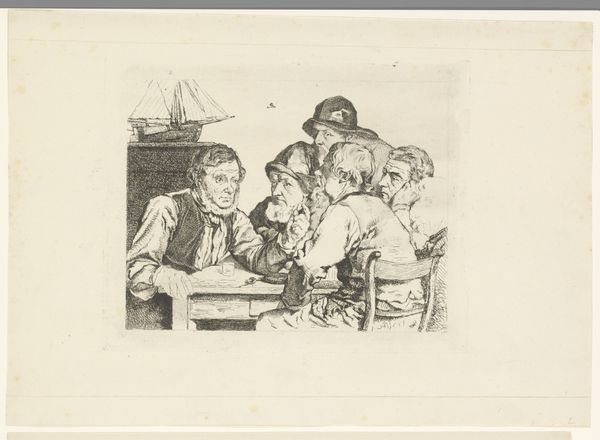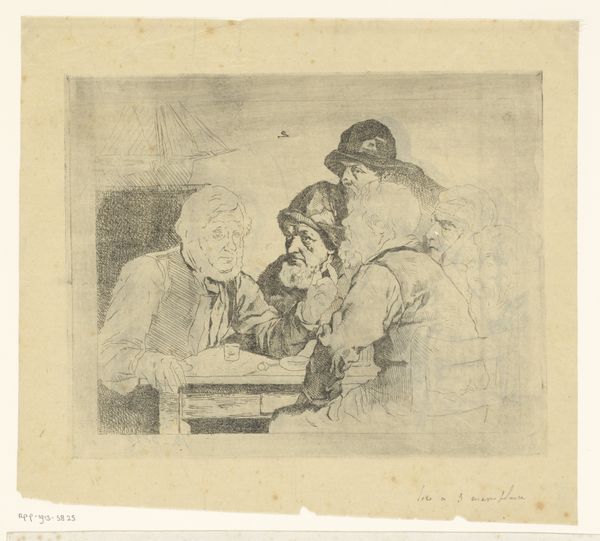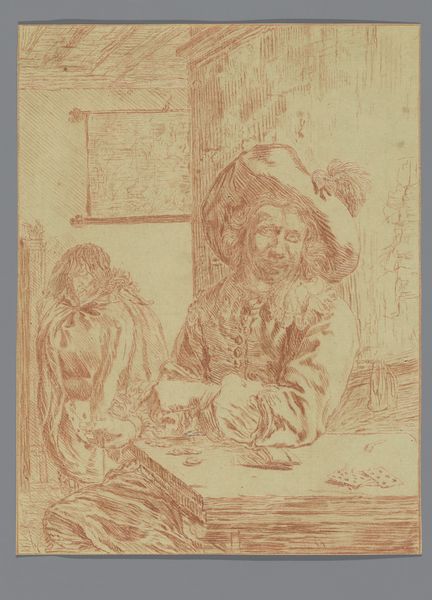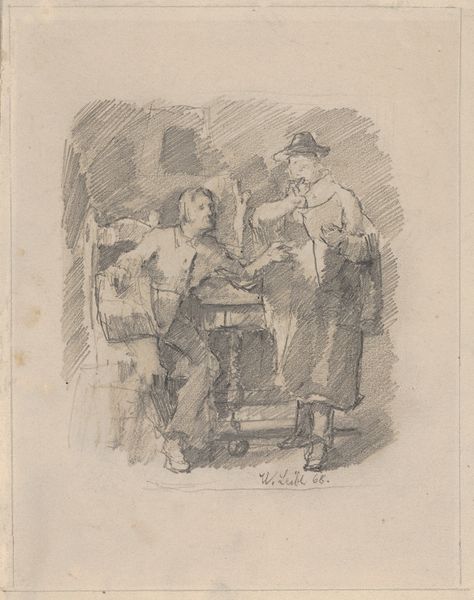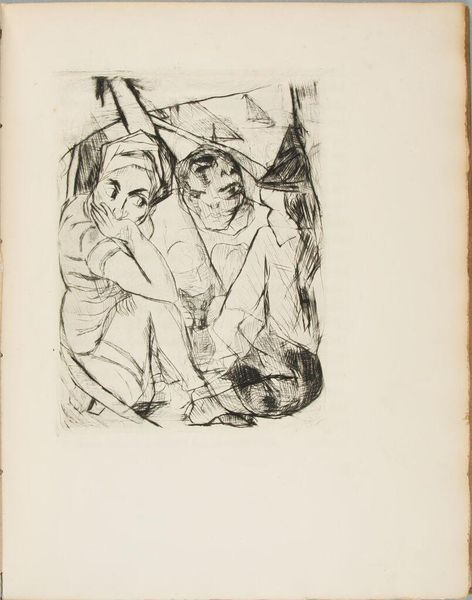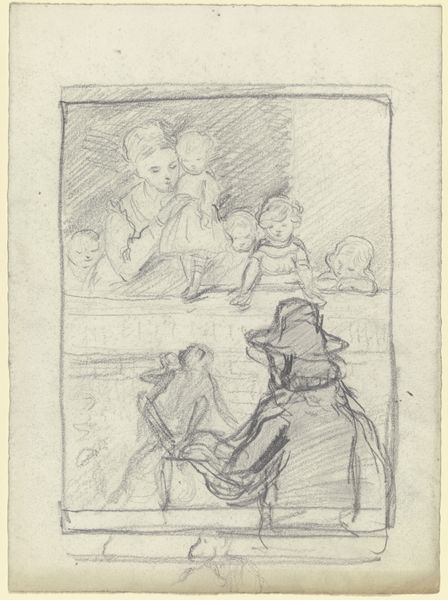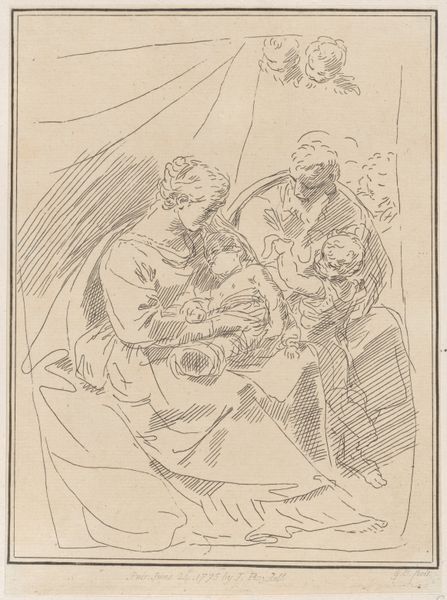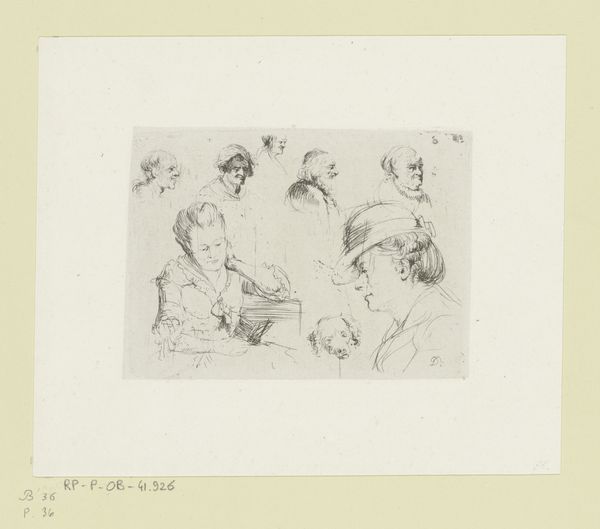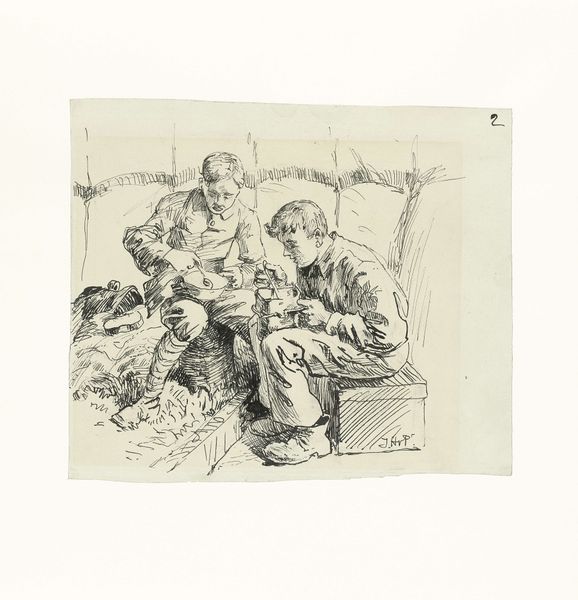
Le Citoyen Aubourg, Mme Aubourg, et leur famille (Citizen Aubourg, Madame Aubourg, and their Family) 1790 - 1800
0:00
0:00
drawing, print, etching, engraving
#
portrait
#
pencil drawn
#
drawing
#
neoclacissism
# print
#
etching
#
pencil sketch
#
group-portraits
#
engraving
#
profile
Dimensions: Sheet: 10 15/16 × 8 1/4 in. (27.8 × 21 cm) Plate: 8 7/8 × 6 9/16 in. (22.6 × 16.7 cm)
Copyright: Public Domain
Curator: Here we have “Citizen Aubourg, Madame Aubourg, and their Family,” an etching by Baron Dominique Vivant Denon, likely made between 1790 and 1800, currently held at The Met. Editor: It has this wonderfully fleeting quality, like capturing a memory half-formed. The lines are so delicate; you can almost feel the copper plate beneath the ink. What catches my eye is the labor depicted – look at Madame Aubourg's hands, seemingly forever occupied. Curator: The artist, Denon, lived through immense social upheaval. Serving as director of museums under Napoleon gave him significant influence. The sketch captures the rising bourgeois class just after the Revolution. You can see it in the intimate, yet slightly reserved depiction. Editor: Reserved, perhaps, but look closer at those hands. Are they sewing, mending? The materiality speaks of a lived experience—a direct link to their daily bread. It makes me wonder about the accessibility of artistic expression during a time of upheaval. Who had access to these forms of representation and how was that influenced by their socio-economic standing? Curator: Denon created these small intimate portraits en masse and one has to wonder if he understood the changing political landscape and sought a way to gain favor or acceptance across the varied societal tiers of the time. Were such works, and his position in society at the time, his way of seeking to be acceptable, palatable even, across all of them? Editor: Right, and the means of producing multiples–the etching technique itself—makes me consider its reach. Was this image meant for a wider audience, or just the Aubourg family? Its dissemination surely speaks to evolving class dynamics. Curator: It serves as a glimpse into their domestic world, rendered with a certain detachment that mirrors the era’s societal tensions. Think how quickly allegiances could shift in those times. Editor: True. This little print provides volumes, not only about a specific family, but of broader political forces shaping their very existence. It goes beyond mere artistry into something of social record. Curator: Exactly! Its value isn't just in its aesthetic qualities but what it tells us about the revolutionary and post-revolutionary milieu. Editor: Indeed, the image reflects labor, class, and the political environment of a changing world. Curator: Well said.
Comments
No comments
Be the first to comment and join the conversation on the ultimate creative platform.
